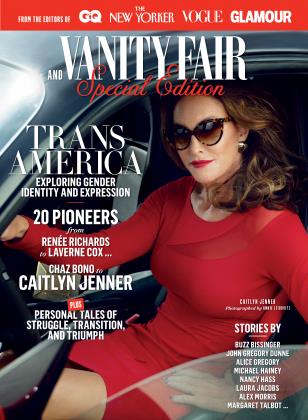Sign In to Your Account
Subscribers have complete access to the archive.
Sign In Not a Subscriber?Join NowBUZZ BISSINGER traces transgender history: the advances, the anguish, and the road to acceptance
August 2015 Buzz BissingerBUZZ BISSINGER traces transgender history: the advances, the anguish, and the road to acceptance
August 2015 Buzz Bissinger View Full Issue
View Full Issue






Subscribers have complete access to the archive.
Sign In Not a Subscriber?Join Now